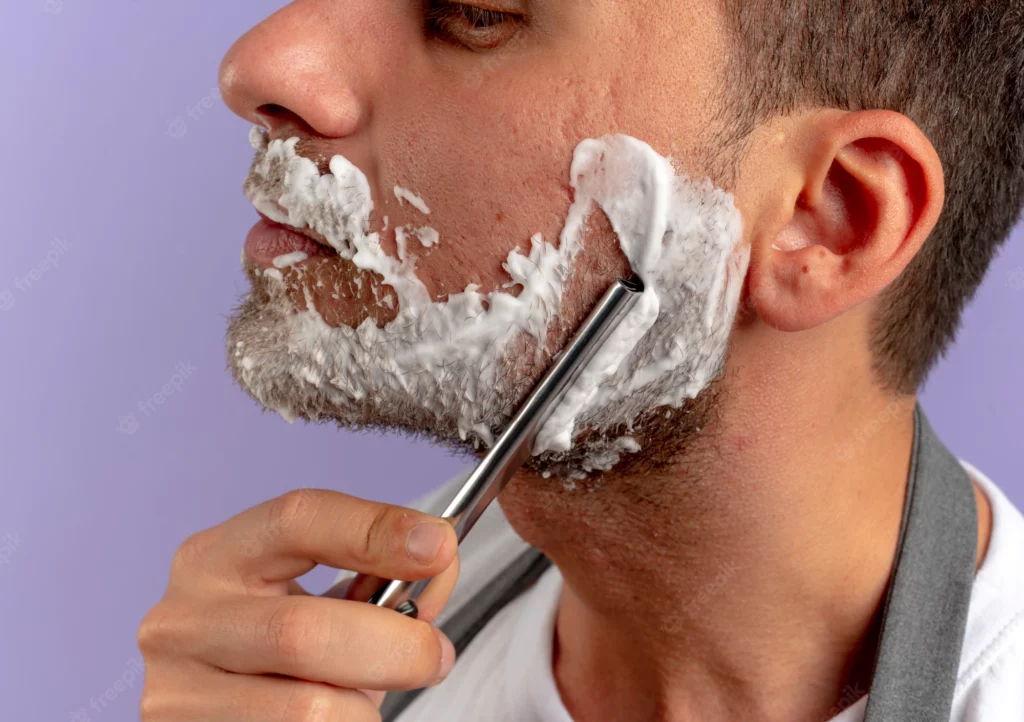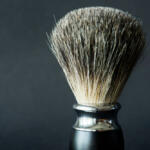
If you’ve ever wielded a razor, you’ve likely pondered the age-old question: Should I shave with or against the grain? The direction you choose can significantly impact the quality and comfort of your shave. In this comprehensive guide, we’ll delve into the nitty-gritty of shaving with and against the grain, explaining the pros and cons of each method and offering expert tips for achieving the perfect shave.
Understanding the Grain of Your Hair
First and foremost, let’s define what the “grain” of your hair means. Simply put, the grain of your hair refers to the direction in which your hair naturally grows. While this direction varies among individuals, most people find that facial hair grows downward on the cheeks and chin, while growing upward on the neck.
Recognizing the grain of your hair is fundamental to shaving successfully. By identifying the grain, you can avoid common shaving pitfalls like razor bumps and ingrown hairs.
How to Identify the Grain of Your Hair
To get the best shave possible, you need to know the grain of your hair. Here are three methods to help you determine your hair’s growth direction:
- Feel with your fingers: Run your fingers gently across your facial hair. If you feel roughness in one direction and smoothness in the other, the rough direction indicates the grain.
- Use a card: Place a piece of cardboard or a credit card against your skin and drag it across. If the hair moves with the card, you’re going against the grain. If the hair doesn’t move, you’re going with the grain.
- Visually observe: If you have longer facial hair, a simple visual inspection in the mirror can help identify the direction of growth.
The Case for Shaving with the Grain
Shaving with the grain, or in the direction of hair growth, is often recommended as the safest option. Here are the benefits and potential drawbacks:
Benefits:
- Reduced irritation: Shaving with the grain minimizes tugging on hair follicles, leading to less irritation and razor burn.
- Prevents ingrown hairs: This method is less likely to cause hairs to become trapped under the skin.
- Efficient cutting: Going with the grain allows the razor to cut hair more easily, reducing the time and effort needed for a shave.
Drawbacks:
- May not be close enough: For some individuals, shaving with the grain doesn’t provide a close enough shave and may necessitate multiple passes.
- Possible discomfort: Some people need to press harder on the skin when shaving with the grain, leading to discomfort.
The Case for Shaving Against the Grain

Shaving against the grain, or opposite the direction of hair growth, has the potential for a closer shave. However, it carries certain risks:
Benefits:
- Closer shave: Going against the grain can produce a smoother finish without multiple passes.
- Increased accuracy: This method is particularly useful for those with thick or coarse hair, as it cuts through hairs more effectively.
Drawbacks:
- Risk of irritation: Shaving against the grain can cause skin irritation, razor burn, and increased sensitivity.
- Higher chance of ingrown hairs: Pulling hair follicles away from the skin can lead to them becoming trapped and resulting in inflammation and ingrown hairs.
- More difficult and time-consuming: Shaving against the grain requires more care and precision to avoid adverse effects, especially for those with coarse or curly hair.
Expert Tips for Shaving with Precision
Regardless of the direction you choose, following these tips will help you get the best results from your shaving routine:
- Use a sharp razor: A sharp blade, whether a cartridge or a straight razor, ensures a close shave with less chance of irritation or infection.
- Soften with warm water: Use warm water when shaving to soften your skin and hair follicles, allowing for a closer shave with less damage.
- Identify the grain: Before shaving, run your hands over the area to determine the grain of your hair and decide which direction to shave.
- Experiment and adjust: Start by shaving with the grain (WTG) and gradually increase the frequency of against the grain (ATG) passes until you find what works best for you. Always reapply shaving gel or foam before each pass.
Making the Right Choice for Your Skin
Shaving with the grain is generally considered the best approach for a close shave with minimal skin irritation and discomfort. However, shaving against the grain can yield an even closer shave for those willing to take extra precautions.
Ultimately, the choice depends on your preferences, skin type, and hair growth pattern. By understanding the grain of your hair and following the tips above, you’ll be on your way to a comfortable and effective shaving routine that works for you.
Last update on 2024-05-08 / Affiliate links / Images from Amazon Product Advertising API
Affiliate Disclosure: This post contains affiliate links, which means I may receive a small commission, at no extra cost to you, if you make a purchase using these links.

Jay Kang
Just because i'm asian does not mean I don't need shaving. I always wanted to grow a beard when I was young, now I need to shave because hair growth for me is a problem. I'm going through what every man will and has gone through before.





